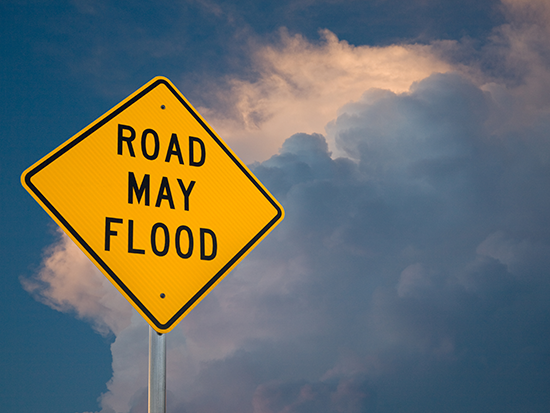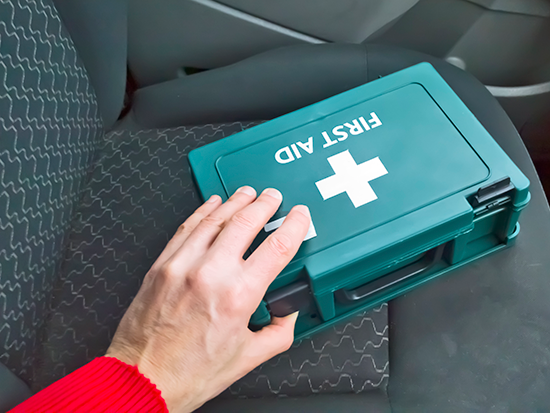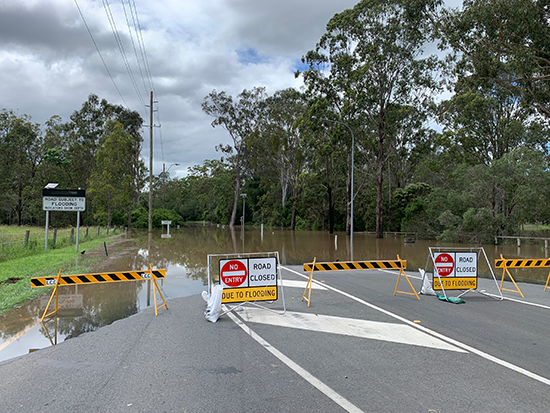 Flash flooding is one of the leading causes of weather-related deaths in the United States according to the National Weather Service. Over spring and summer 2022, destructive flash floods have occurred across the country from Texas to Death Valley to Kentucky and even in Birmingham and the surrounding areas.
Flash flooding is one of the leading causes of weather-related deaths in the United States according to the National Weather Service. Over spring and summer 2022, destructive flash floods have occurred across the country from Texas to Death Valley to Kentucky and even in Birmingham and the surrounding areas.
Flash floods can occur within a few minutes or hours during an excessive rainfall event, a dam or levee breaking or city drains overflowing. The extent of the flooding depends on how long and how hard it rains, infrastructure, topography and soil conditions in an area. Water can infiltrate buildings, roadways, carry away large debris, cause mudslides and create dangerous situations for people and their property.
Eddie Coar, director of Emergency Management at the University of Alabama at Birmingham discusses tips and best practices on how to stay prepared and safe during a flash flood.
Know your risk
The most common types of floods include urban, river and coastal flooding. Coar suggests assessing the amount of flash flooding risk for one’s house, office and general area by checking with local emergency management agencies or the National Weather Service.
If there is an elevated risk for that area, it is important to pay close attention to local weather reports, especially if there is expectation for a heavy rain event such as a slow-moving thunderstorm, intense rainfall, tropical storm or hurricane.
Be prepared
“Flash floods are unpredictable, rapid and can occur during any season,” Coar said. “It is important for everyone to know their risk and create an emergency plan, so they are prepared for when a flash flood hits.”
Coar encourages families to create emergency response cards for each member, so everyone knows who is responsible for every response or action. The cards are also useful for identification and contact information should family members be separated or stranded.
Additionally, stocking cars and households with supplies that are beneficial during any natural disasters, including flash floods, is an important step in emergency preparedness.
 Car supplies:
Car supplies:
- Flashlights and extra batteries
- First aid kit
- Food items containing protein such as nuts and energy bars
- Water
- Tool that breaks car windows and cuts seat belts
- Cat litter or sand for tire traction
- Extra clothes and sturdy boots
- Flares or reflective triangle
- Full gas tank, especially if bad weather is predicted
House supplies:
- One gallon of drinking water per person per day for at least three days
- Non-perishable food supply for three days
- First aid kit and medication
- Flashlight, batteries and hurricane candles stored in waterproof container
- Local maps
- Important family documents kept in waterproof container
- Complete change of clothing including a long-sleeved shirt, long pants and sturdy shoes
- Weather radio
- Whistle or reflective triangle
For those who live in an area with a high risk of flooding, consider having flotation devices easily available for all people in the household.
 Stay safe
Stay safe
Whether at home, work or in a car, people should immediately seek higher ground or evacuate in a flash flood situation. Never drive, walk or swim through flooded roadways, sidewalks or flood waters in basements or other parts of a home or building. Avoid downed power lines.
“If you cannot evacuate before a flash flood occurs, stay where you are,” Coar said. “It is dangerous to evacuate through flood waters because the depth and velocity of the water are not always obvious.”
Turn around, don’t drown!
Coar reiterates not to drive in flood areas or around safety barricades. Driving through flood waters, even as low as six inches, can quickly become hazardous. Stay inside the car if trapped in rapidly moving water. If water begins to rise in the car, get on the roof.
How to return safely
Flash flooding and severe weather resources:
• Federal Emergency Management Agency
• Ready.gov
• National Weather Service
• UAB Emergency Management
Even once water recedes, it does not always signal it is safe to return to one’s car, home or office. Pay attention to authorities for instruction and only return when it is deemed safe. Wear work gloves and protective clothing while cleaning up. Be aware that animals and snakes may be hidden in the area. Continue to watch out for power lines, avoid using wet electrical equipment and only use generators and gasoline-powered machinery outside and away from windows.
“While rushing flood waters create many dangers, it leaves behind many as well,” Coar said. “Exercise caution when returning to areas and always listen to local authorities. Avoid wading in floodwater which could be contaminated with debris or could be electrically charged by underground or downed powerlines.”
For more emergency preparedness tips and information for all natural disasters, visit the UAB Emergency Management website.
